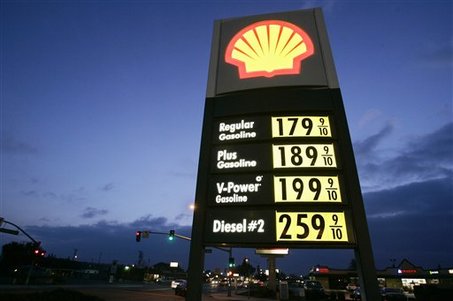It has been more than four months since BP’s deep-water oilrig explosion, but the disaster’s consequences are still strewn all over the news. Its hype sent last week’s Mariner Energy platform fire to the front page of The Washington Post.
But according to The Seattle Times, there are fires on oil production platforms in the Gulf over 100 times a year. If not for the close timing and location the platform fire shared with BP’s spill, the platform fire would not have been portrayed in such a significant light.
The platform fire was put out in less than 12 hours and the 13 workers on the platform during the incident walked away uninjured. BP’s oil spill, on the other hand, resulted in the death of 11 people and continues to affect the natural and economic environment.
Not to mention the difference in the amount of oil released by both accidents. The Mariner Energy platform fire didn’t release any oil into the ocean, while the BP oilrig sent 206 millions gallons of oil gushing into the Gulf.
The fire’s effects were not even close to being as traumatic as the environmental and economic downfalls of the BP spill.
A platform fire is nothing new to the oil business. When aged metal structures come in contact with welding sparks, a fire results. It is the nature of the business.
The Mariner Energy platform and other shallow-water platforms function differently and are much safer than deep-water oilrigs like BP’s Deepwater Horizon. Platforms are used for pumping oil out of the ocean floor. Their wells are already drilled and sealed, and they are in shallower water, closer to shore. This makes them less susceptible to oil spills, yet easier to access and fix if there is an oil spill.
Deep-water oilrigs are used for drilling wells and remain unsealed. They are more susceptible to spills and are in deeper water, farther off shore, making them more challenging and time-consuming to fix.
Both accidents have individual importance and need to be cleaned up appropriately, but both needed to be handled differently by the media. The Mariner Energy platform fire should not have been on the front page of The Washington Post last week, and the BP spill should not have been blown out of proportion, hyping up other non-related news. Let each story stand for itself and not be correlated with others unless it helps reveal the truth.
As a reader, you can help yourself understand each story for what it is.
Look into these stories using your own discretion. Read more than just the headlines. Ask questions about each point in the story, and compare them to related topics reported in the past. Do not get caught up in the hype, and once you are fully aware, you can justify how it impacts your life and others.




John F. Markert, Esq • Sep 13, 2010 at 3:37 pm
Ms Power’s article is nicely done. The last parqgraph is a good formula for readers and journalists alike. I would adopt it and expand on it as follows: 1. Look at and view events with reserve and discretion. 2. Read more than just the headlines -read all other reports reasonably available on the subject matter. 3. Ask question about each point identified and raised. 4. Compare your analysis and answers to past related events/topics. 5.Ignore the inevitable sensationalism and Hype. 6 Consult or research any available Experts or Data. 7. Interview witnesses if available and appropriate. 8. Organize the facts, speculations and theories(Technology/Science etc.) 9. Publish or issue your story/report on the event or incident. [Report the facts as facts.] [Report speculations or guesses as such.] [report opinions as opinions – not as fact] [Offer suggestions, critique,solutions, etc., if appropriate.]
These are the things I look for in journalism and the news. I would say Ms. Power covered he topic at this date quite well. John F. Markert
Joanne Markert • Sep 13, 2010 at 12:09 pm
Very good point! That is how editors, a lot of the time, decide what to do and what to focus on ….what to put as a front line story and what goes in the second page, by what is “hot”, or by what has recently happened in the news. It is a sort of built-in way of focus that has been around since all the small town people gathered around the fire in town to see what happened. Journalism needs to find a way to be able to sell the news with our sensationalistic presentation to do so. A very big challenge in today’s world. Great perspective…thank you!